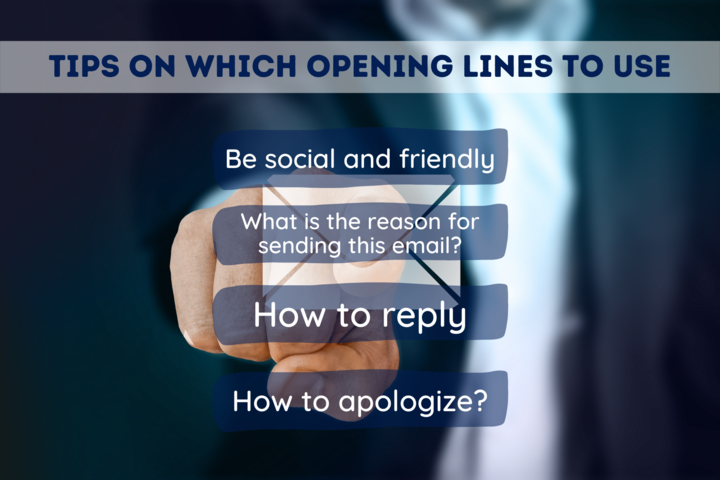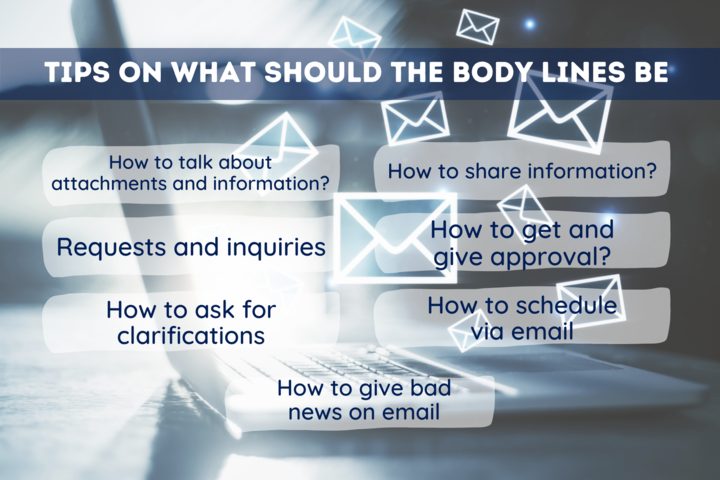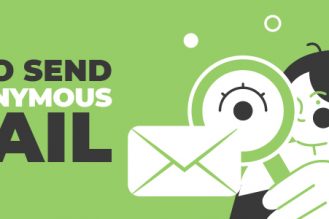30 professional words and phrases for your perfect business email

The way we write emails reflects our professionalism and leaves a lasting impression on recipients and it influences our business environment. Crafting well-written business emails with the right words and phrases is crucial to conveying a polished and respectful tone. This article aims to be your ultimate guide, providing a comprehensive list of 30 professional words and business email phrases to elevate your email writing skills, enhance business communication effectiveness, and foster strong relationships in the corporate world.

Greetings and Openings
When it comes to writing professional emails, the first sentence is crucial. It sets the tone for the entire message . Crafting a strong opening can entice the reader to continue reading and engage with the content. One way to do this is, to begin with a question that piques their interest. Alternatively, you could start with a bold statement that captures their attention. Whatever approach you take to opening lines up, remember that the first impression matters and can greatly impact the success of your email. Therefore, it is important to spend time crafting a compelling opening that will leave a lasting impression on your readers.

When addressing various professional situations, it is advisable to use these formal greetings opening phrases and openings:
- Dear [Recipient’s Name],
- Good morning/afternoon,
- I hope this email finds you well,
- Trust this email meets you in good health,
- I am writing to you today to discuss [topic].
Expressing Appreciation and Gratitude
Showing gratitude is an incredibly powerful tool that can be used to build meaningful connections and establish a sense of rapport between individuals. By demonstrating appreciation for the efforts of others, we are able to create a sense of mutual respect and understanding that can help to foster positive relationships both in personal and professional settings. Therefore, thank you in advance everyone, it is important to take the time to recognize and acknowledge the contributions of others.
Express thanks and appreciation professionally with phrases like:
- Thank you for your prompt response,
- Your hard work and dedication are truly commendable,
- I appreciate your valuable insights on [topic],
- Many thanks for your continuous support,
- I am grateful for the opportunity to collaborate with you.
Making Requests and Inquiries
When making requests or seeking information, it is important to always use polite and courteous language. This not only helps to establish a positive rapport with the person you are communicating with, but it also demonstrates your professionalism and respect for their time and expertise. One way to ensure that you are using the most appropriate language is to take the time to consider your audience and tailor your communication style accordingly. For instance, if you are addressing someone who is senior to you in rank or experience, you may want to use more formal language and avoid slang or jargon. On the other hand, if you are communicating with someone who is more junior or less experienced than you, you may want to adopt a more relaxed and conversational tone. Whatever the situation, remember that clear communication and mutual respect are key to building strong and effective relationships, both personally and professionally.
Here are some examples:
- Would you be able to assist with [request]?
- I kindly request your expertise on [subject line],
- May I inquire about [topic]?
- I would be grateful if you could provide more further details about [subject],
- If possible, could you please send me [information]?
Providing Information and Updates
Effective communication is essential in both personal and professional interactions. One of the most important skills in communication is the ability to convey information clearly and concisely, but this is not always easy. Sometimes, additional context or background information is necessary to ensure that the message is fully understood. In fact, providing too little information can sometimes be just as detrimental to effective communication as providing too much. Therefore, it is important to strike a balance between brevity and completeness when conveying information. Additionally, choosing the appropriate medium for communication can also play a significant role in ensuring that the message is received and understood as intended meaning. This might include selecting the right tone, format, or channel for the message, depending on the audience and purpose of the communication. By using professional words for email writing and taking these factors into consideration, one can improve the chances of effective communication and ensure that the intended message is received and understood by the audience.

Utilize these phrases:
- I would like to update you on the progress of [project],
- Please find attached the report detailing [topic],
- Allow me to share some exciting news about [development],
- Here’s a summary of the key points discussed during the meeting,
- Feel free to reach out if you require any further information.
Handling Delicate Situations
When it comes to managing sensitive situations, it’s important to strike a balance between professionalism and empathy. While maintaining a professional demeanor is crucial for establishing credibility and building trust, showing empathy and understanding can help foster positive relationships. One way to navigate delicate matters is to actively listen to the other person’s needs and perspective and to respond in a respectful and compassionate manner. Additionally, taking the time to acknowledge and validate the other person’s feelings can go a long way in diffusing tensions and resolving conflicts just a quick note. Ultimately, by approaching sensitive situations with a combination of professionalism and empathy, individuals can build stronger, more positive relationships both personally and professionally.
Consider these phrases:
- I understand your concerns and will do my best to address them,
- Your feedback is valuable, and I appreciate your honesty,
- Let’s work together to find a suitable solution for [issue],
- Please know that I am here to support you during this challenging time,
- Your contribution is invaluable, and we’ll take your input into careful consideration.
- Greatly appreciated
Closing and Signatures
It’s important to pay attention to how you end a professional email. A proper ending to the last email can reinforce your credibility and professionalism, leaving a lasting impression on the recipient. One way to do this is to include a closing statement that highlights your appreciation for the recipient’s time and attention. Another option is to summarize the key points of the email and encourage the recipient to take action. Whatever approach you take, make sure to always end your email on a positive note to leave a lasting impression on the recipient.

Choose from these formal closings:
- Best regards,
- Looking forward to your response,
- Warmest regards.
Words matter in business communication
Effective email communication is a pillar of success in the business world. By using appropriate words and phrases, you can leave a positive impact and build strong professional relationships . Remember to express appreciation sincerely, handle delicate matters with empathy, and maintain a polite tone when making requests or sharing information.

Incorporate the 30 professional words and phrases provided in this article to conquer challenges in your email writing. Clear communication and courteous language will distinguish you as a competent and respectful professional, leading to fruitful collaborations and business endeavors.
You can save these tips and phrases in a PDF file and use them in your marketing strategies . Remember, your words have the power to open doors and create opportunities. Enhance your business email communication starting today!
Don’t miss valuable insights.
Get our weekly newsletter for better email deliverability
Related posts

Yahoo Warm-up, Yahoo FBL and Yahoo bounce errors

What is an SMTP server, SMTP service provider, and how to send via SMTP?

New sending requirements when sending to Gmail and Yahoo in 2024.

Timing is Everything: When’s the Best Time to Send Your Email?
Effective Email Phrases To Improve Your Emails
Are you looking for tips on how to write better emails? In this article, we’ll discuss email phrases that you should be using in your business emails. By following these guidelines, you’ll be able to create messages that are clear and concise – and more likely to get a response! One of the most important […]
Are you looking for tips on how to write better emails? In this article, we’ll discuss email phrases that you should be using in your business emails .
By following these guidelines, you’ll be able to create messages that are clear and concise – and more likely to get a response! One of the most important aspects of email communication is knowing what phrases to use – and what phrases to avoid.
Do you find yourself writing the same opening line, body lines, and closing lines over and over again? Fortunately, there are tons of email phrases out there that can help make your business emails more varied while improving their quality.
100+ Email Phrases to help you Communicate Better
1. email opening lines you should use.

Be friendly and social:
These words can be used as your email opening words to make you more friendly and social.
- Enjoy your weekend?
- I hope you enjoyed your trip.
- We hope you had the time away you needed!
- I hope all is well with you.
- We hope you have a wonderful holiday season.
- I hope you had a great time at [insert event].
- It was a pleasure to meet you at the convention.
- It was great to see you [insert time].
What is the purpose of this email?
Let’s get to the bottom of it. Why are you writing this email?
- I wanted to thank you for yesterday’s presentation. It was very informative and everyone enjoyed it. We look forward to attending the next event together.
- This email is in regards to/regarding/concerning/in connection with…
- I am writing to you to follow up and get your thoughts on our last interaction.
- Please get in touch with me to [reason]
- Why am I reaching out?
- This email is to inform you [reason]
- Hello, my name is [Your Name] and I am from [Your Company].
How to reply:
- I just got received your request for…
- I just went through your email about…
- As per our discussion, I would like to send you…
- Thank you for your previous email about… It was great to know.
- Thanks for writing to us this morning/yesterday/on Wednesday/last month…
- Thank you for sending us feedback on/your invitation/your suggestion. It is greatly appreciated.
- Thank you for sending/asking about/attending.
- Thank you for replying so quickly.
- Thank you for responding so quickly.
- Thank you for your response.
How to apologize?
- Sorry for replying so late.
- Sorry, it took me longer than usual to get back to you.
- I am sorry for my late response.
- Sorry, it has been a while since my last email.
- I was sorry to hear about it… Please accept my apologies/condolences.
- We deeply regret any inconveniences caused. Please accept our apology.
2. What to Include in the Body of the Email

How to talk about attachments and information?
- With this email,I’ve attached…
- Please find [file] attached to this email.
- I have enclosed [file].
- The changes made are in bold/in red/in blue are my comments/.
- Please go through the attached file and review it.
- The file I have sent is a pdf file.
- The contents of the attached file are…
- Please sign the attached form and send it back to us by [date].
- As discussed, here’s the [document].
- I have attached [file].
- Please tgo through at the attached file.
- Please check the [file] I’ve attached to this email.
- I am attaching [file].
- Please visit www.talaera.com for more information.
- Please make a note that…
Requests and inquiries:
- Could you please…?
- Kindly tell me…?
- I’d really appreciate it if you…
- I’d be highly grateful if you…
- If you could send us/me…, it would be of great help.
- If possible, I’d like to know (more) about…
- Please find my two main questions below.
How to ask for clarifications:
- Sorry I didn’t understand it fully. Could you please explain that again?
- I didn’t quite get it. Could you be more specific?
- Could you repeat what you said about…?
- Could you give us some more details on…?
- I would really appreciate if you could shed some light on this topic.
- Could you please clarify [something]?
- What are your expectations? When do you wish to have this feature?
- Please find the details on…
- Could you please let us know what you would like us to do about…?
- If I am not mistaken, you would like me to…
- What do you mean by [something]?
- Could you explain it to me again?
- In other words, you would want us to?

Sharing information:
Use these helpful phrases when you are sharing information to someone or when they have already told you.
- Thank you for keeping me in the know.
- Thank you for notifying me.
- Please take a note…
- Just to remind you…
- Just a quick/friendly reminder that…
- Thank you for sharing.
- I’d like to inform you that…
- Just a quick heads up.
- Thanks for keeping me in the loop.
- Please keep me informed/posted/updated/in the loop.
How to get and give approval?
- Is it OK with you? Please let me know.
- What do you think about this?
- What are your views?
- Please let me know your views.
- We are just waiting for your thumbs up/green light. (=we’re waiting for approval).
- You (totally) have the go-ahead.
- He approved it, so you can start working on the project.
How to schedule via email:
- If it is comfortable for you, I’d like to schedule a meeting on [day].
- I am available on [day], is that convenient for you?
- Would you be available/free on [day]? If so, I’ll send you an invite shortly.
- Is [day] feasible for you? If so, I’ll book accordingly.
- I’m afraid I won’t be able to make it on [day]. How about…?
- We are sorry to inform you that the interview/meeting scheduled for [day] will have to be rescheduled. Please accept our apologies.
How to give bad news on email:
- Unfortunately, …
- Unfortunately, we cannot/we are unable to …
- Unfortunately, I have to inform you that…
- I’m afraid that we won’t be..
- I regret to inform you that (because of…) …
- After careful consideration, we have taken a decision to not to …
- Due to [reason], it seems unlikely to..
- It’s against company rules to…
- I put in my best efforts, but…
- Despite putting in my best efforts, …
- I’m sorry but it’s not in my domain
- I’m afraid it is not possible for me to..
- I regret to tell you that…
3. How to End the Email?
When the response is expected:.
The next time you need to text someone and don’t know what to say, try one of these lines: -Do you want a reply? -Are we meeting soon? And my personal favorites closing lines are…
- Looking forward to your reply.
- I look forward to your reply soon.
- See you on Thursday/next week.
- Thanks you so much.
- Thank you in advance.
- Thank you for everything.
- Any feedback you can give me on this would be greatly/highly/much appreciated.
- If you could have it ready by tomorrow/the end of next week, I would really appreciate it.
- I would appreciate your help in this matter.
How to offer help or information:
- I hope this is of your help.
- I hope it is clear to you now.
- I hope we have answered all your questions.
- If you need any additional assistance, please let us know..
- If you need any help, please let me know.
- For more details…
- If you need any more information in the meantime, please don’t hesitate to contact us.
- If you need more information, please don’t hesitate to contact us.
- Please let me know if there’s anything I’ve said that doesn’t make sense. I want to be sure you have all the information you need to make a decision.
How to apologize (again!):
- Thank you for your understanding/for your patience.
- Thanks again for your understanding/for your patience.
- We apologize for any inconvenience caused.
- Is this okay with you?
- I am confident that we can find a solution to this problem soon.
- I trust that you can understand.
- Thank you for reaching out to me. I wish I could have been more helpful.
What are some friendly ways to say ‘bye’:
- Best wishes.
- Best of luck.
- Welcome, everyone!
- Have a great day!
7 Email Apps to Supercharge Your Email Communication
There are many email writing apps and plugins that make it easier to draft an effective sales email. Here are 7 of the best email Apps to help you improve your email communications.

1. Right Inbox
Email signatures are essential to any professional email. With Right Inbox, you can have a polished and detailed signature in seconds by including your name, role and company information with other details like social media buttons or logos. Right Inbox allows you to switch between multiple signatures as well.
2. Grammarly
Whether you are looking to write a quick email or an essay, Grammarly can help. The plugin will keep your emails grammatically perfect and easy to understand while also detecting the tone of what you’re writing so that people don’t misunderstand it.
Crystal is a Google Chrome plugin that analyzes your email recipient’s personality and then determines the best tone for you to use. It does this by analyzing existing online data about them, so it can be confident in its decision.
Email is a difficult medium to use, especially when you’re trying to make connections with people. Thankfully, Charlie does the research for us by finding out what’s going on in our recipient’s life and we can send them an email that sounds like it was written just for them.
5. Just Not Sorry
Language like “sorry” and phrases such as “I might be wrong” can compromise your authority in an email. Just Not Sorry flags these words to make sure you don’t overuse them when sending a message.
6. Briskine
When you write the same email over and over, it can be really tedious. You have to format all of your paragraphs in a specific way just so that they’re different enough for each recipient but still convey the same message.
Briskine templatizes emails by creating preset formats that are available with one keystroke—you don’t even need to think about formatting.
Gmail offers predictive text that can help you write emails in less time and maintain a natural tone to your email.
The system also makes it easy to add documents or images into your message- just click and drag them from your computer straight into the body with no hassle.
Email communication can be a great way to stay in touch with your customers and keep them updated on your latest products or services. However, if you’re not careful, it can also be a great way to annoy people!
By using the right email phrases, you’ll be able to make messages that are clear and concise – and more likely to get a response!
Table of Contents:
Track emails, email reminders & templates in Gmail for free
Upgrade Gmail with the features it’s missing
David Campbell
David Campbell is the editor of the Right Inbox blog. He is passionate about email productivity and getting more done in less time.
In this article
Related articles.

4 Top Tools for Adding Notes to Your Email in Gmail

How to Schedule Emails Based on Your Recipient’s Time Zone

How to Send an Anonymous Email: The Complete Guide
Installs in 30 seconds — works with chrome, safari and firefox, start spending less time in your inbox.

IMAGES
VIDEO
COMMENTS
When addressing various professional situations, it is advisable to use these formal greetings opening phrases and openings: Dear [Recipient’s Name], Good morning/afternoon, I hope this email finds you well, Trust this email meets you in good health, I am writing to you today to discuss [topic].
Language like “sorry” and phrases such as “I might be wrong” can compromise your authority in an email. Just Not Sorry flags these words to make sure you don’t overuse them when sending a message. 6. Briskine. When you write the same email over and over, it can be really tedious.
Business Email Phrases and Alternatives. 1. I’m sorry for the delayed response. ↓. I appreciate your patience. “I’m sorry for the delayed response” immediately points out a mistake on your behalf. It’s a busy world, and emails can sometimes slip through the cracks. Instead, thank the recipient for their patience.